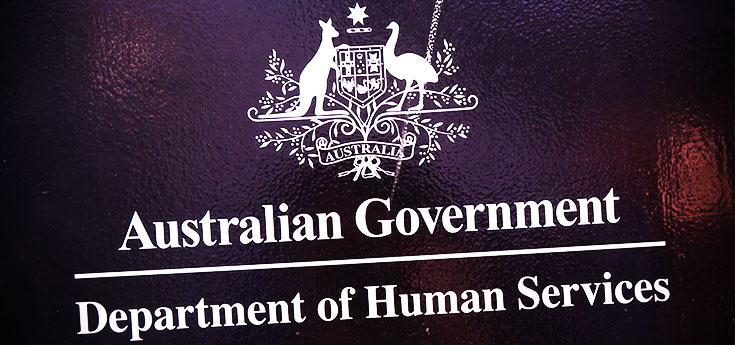Rather than being encouraged to pick up its game on the customer service front, the Department of Human Services (DHS) has been told to scrap its agency, Centrelink’s customer satisfaction goals.
Advice from consultancy firm PricewaterhouseCoopers (PwC), commissioned by the Government at a cost of $150,000, calls for the DHS to set more realistic customer satisfaction goals for Centrelink.
Aside from being under fire for its robo-debt recovery system and 42 million Centrelink calls receiving an engaged signal in the last 10 months, Centrelink has failed to even remotely come close to its 85 per cent customer satisfaction rating in recent years.
The department’s approval levels have been slipping since 2012, when it reached a peak satisfaction level of 71 per cent.
In response to these poor ratings, senior officials paid PwC for a 16-week review of how the DHS measures success and performance.
After the review, PwC told the DHS that it would continue to fail unless “substantial change to the customer and service experience” was implemented.
“It’s clear that a target of 85 per cent will not be achieved under all models for Centrelink without substantial change to the customer and service experience,” said the report.
“Consideration could be given to revising the KPI [key performance indicator] target to be in line with other global welfare providers and to be achievable based on historic performance.”
However, it is believed that the Government has rejected the consultancy firm’s advice.
“No decision has been made to make any changes,” said DHS spokesman Hank Jongen.
“Given that many people accessing welfare are experiencing difficult circumstances, the customer satisfaction targets intentionally set a high bar.”
But PwC believes that this ‘high bar’ might undermine the department’s performance.
“Unattainable targets can result in motivation and performance decreases while increasing risk-taking behaviours,” said the report.
Opinion: Can expectations of Centrelink be any lower?
Considering that Centrelink hasn’t even come close to realising its lofty customer satisfaction goals, would it be better served by lowering its bar and, in turn, lowering expectations?
One of the things that rankles people more than poor service is broken promises.
If you walk into a restaurant expecting silver service and you receive a grunt and a paper napkin, you’re going to be disappointed.
That’s basically what Centrelink is doing by setting these high targets.
If Centrelink wants to retain a high bar, then it should do so internally. Don’t advertise it to the multitude of customers who, already dissatisfied with their situation, have it rubbed in their faces even more by receiving poor customer service. That’s when they can actually get a face-to-face or have their call answered.
It’s fair to say that it’s not all Centrelink’s fault, and it’s especially not the fault of their employees. Constant funding cuts, resource and staff reductions, not to mention the roll-out of a robo-debt recovery system that was clearly not properly tested (in fact, the Government knew it was faulty) and we have a recipe for dissatisfaction.
It may seem as though the Government is doing the right thing by maintaining a high target, but if these targets cannot be met, then maybe it is better off lowering the bar. At least it will mean that more people have a realistic expectation for the level of service they’ll receive from the department – and maybe a few more will walk away satisfied.
Do you think the Government should set more realistic goals? Or is setting these high targets a way for the department to commit to better service?
Related articles:
Centrelink to target age pensioners
Robo-debt program to be expanded
DHS threatens ‘Save Medicare’ man

